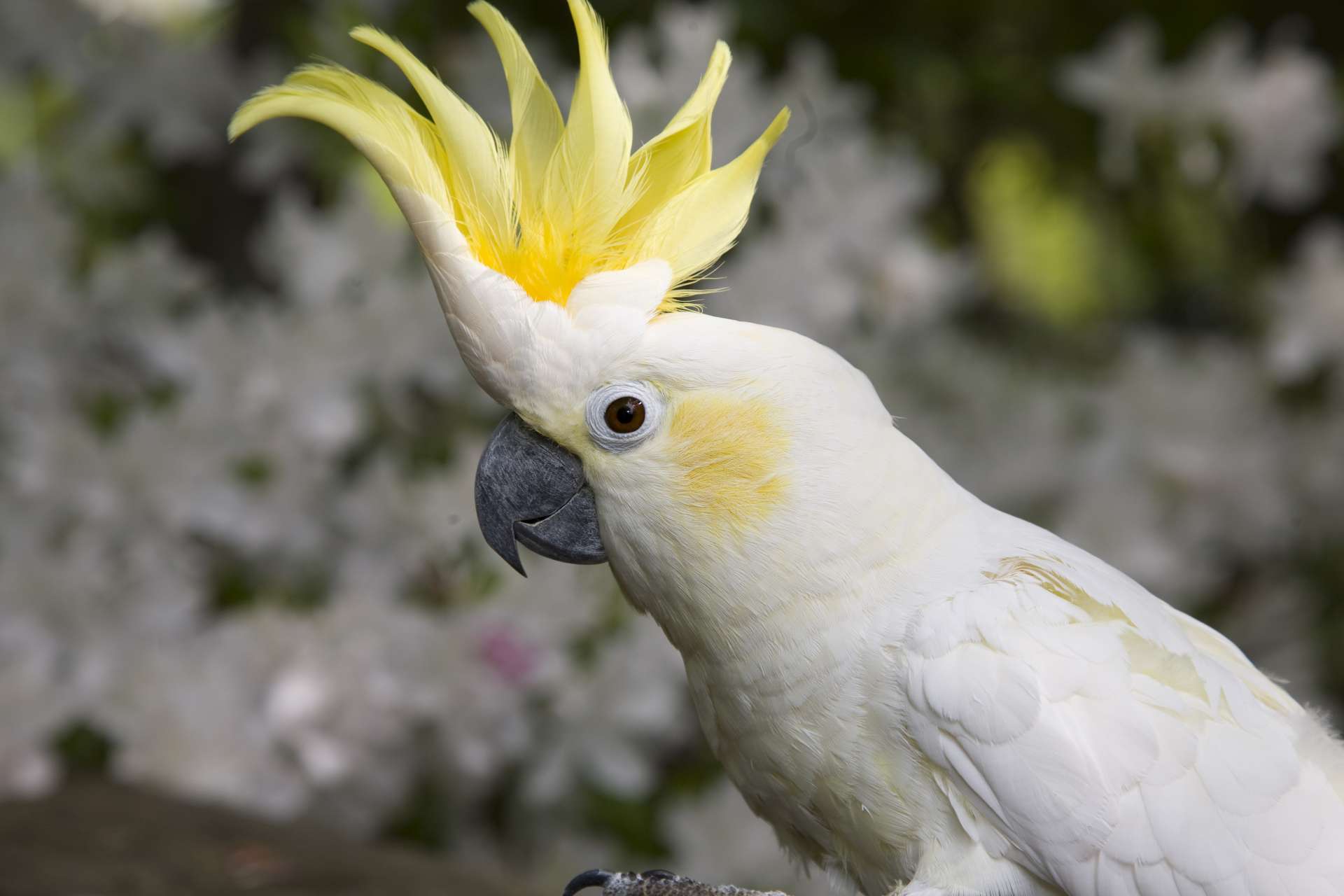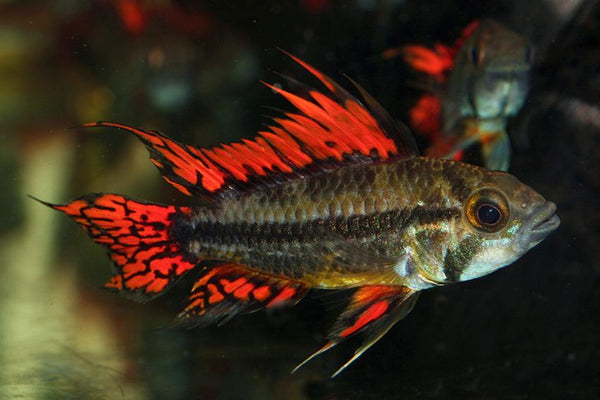

#YELLOW COCKATOO CICHLID FREE#
The fry are free swimming in 7 to 10 days, at which time they should be provided newly hatched brine shrimp. The male then leaves the brood to the female to care for. After the female lays her eggs, the male will follow her and fertilize them.

The Cockatoo Dwart Cichlid is an egg layer that prefers spawning in caves. Although these are one of the few South American Dwarf Cichlids that can tolerate alkaline water, they require good water conditions and should be given regular water changes for them to stay healthy. They can be housed with tetras and other peaceful species without any problems but Apistogramma cacatuoides are timid and should never be kept with larger, aggressive species. These cichlids are well suited for planted aquariums but need plenty of swimming room.īecause the males and females are territorial, Cockatoo Dwart Cichlidsshould be kept in pairs, trios of one male with two females, or in harems of one male with several females. The Cockatoo Dwarf Cichlid is best kept in a densely planted aquarium of at least 30 gallons with a sandy or very fine gravel substrate, some caves and driftwood roots for them to hide in, or (in a biotope setup) some Indian Almond Leaves on the bottom of the tank. Both sexes have the dark line that leads from the eye to the bottom of the gill flap. They lose their black lateral band which is replaced by a black side spot.

Their background body color is a dull pale yellow with a clear black line running along the flank.ĭuring mating or when the females are protecting their fry, their body colors becomes more vibrant andĬockatoo Dwarf Cichlid (Apistogramma cacatuoides) Female

The ventral fins are clear and the leading 3 or 4 hard rays are elongated.įemales lack the elongated dorsal rays of the male, and their ventral fins show a black leading edge. The males are much more colorful than the females and usually have red/orange dorsal and caudal fins. The mouth of these cichlids is rather large with thick lips. Males grow up to 3.5 inches and the smaller females max out at around 2.5 inches. The male Cockatoo Dwarf Cichlid has a noticeably elongated body shape, is larger than the female, and has very long prominent rays in the dorsal fin and bright coloration as compared to the smaller fins and drabber brownish/yellowish background body color of the female. Tropical fish keeping enthusiasts have developed several other more color intense varieties through selective breeding. The Cockatoo Dwarf Cichlid has blue, yellow and red color forms that occur naturally in their native habitats. Quality and variety are the keys to a diet that will ensure that this fish maintains optimal health and coloration.Cockatoo Dwarf Cichlid (Apistogramma cacatuoides) High-quality dry, frozen, and live meaty foods will all be readily accepted. If spawning is desired, tankmates of other species should be kept to a minimum or avoided altogether.įeeding is simple for the unfussy Orange Flash Cockatoo Dwarf Cichlid. Dwarf shrimp and other small, delicate invertebrates should not be kept with the Orange Flash Cockatoo Dwarf Cichlid, but more durable, larger shrimp and snails could possibly make good tankmates in a large enough aquarium. Territoriality is typically at its peak during spawning. This cichlid is generally compatible with other peaceful fish as long as it has plenty of space. It is an excellent candidate for the planted aquarium, but it also needs a fair amount of open space. The Orange Flash Cockatoo Dwarf Cichlid will thrive in an aquarium with a sandy substrate and plenty of refuges such as clay pots, driftwood, and rock formations. As with most dwarf cichlids, females are less colorful, but still have an attractive appearance and plenty of personalities. The body is typically a blue-violet sheen with a black horizontal stripe, which makes for a very distinctive and beautiful appearance. Males are particularly colorful, boasting incredible bright orange coloration on the ample dorsal fin as well as the tail and anal fin. The Orange Flash Cockatoo Dwarf Cichlid ( Apistogramma cacatuoides) is one of the most beautifully colored and most popular dwarf cichlids in the freshwater aquarium hobby.


 0 kommentar(er)
0 kommentar(er)
